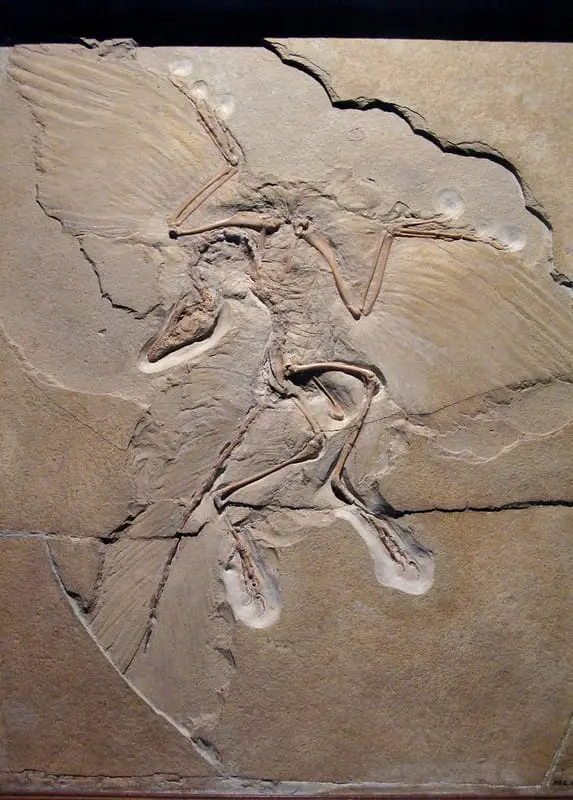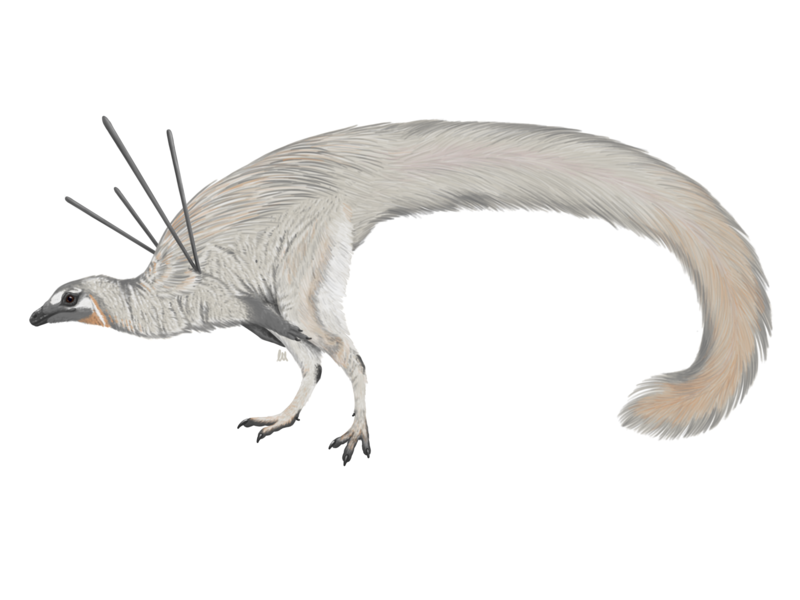Feathered Dinosaurs
At first glance, it may be hard to see how the pigeons you avoid or the peacocks you admire have anything in common with dinosaurs. However, many scientists believe that modern birds are living dinosaurs - specifically, they are a group of two-legged carnivorous dinosaurs called theropods, which managed to avoid the last great extinction of dinosaurs 65 million years ago. They not only developed feathers, larger and more adaptable brains, but also reduced sizes and more streamlined bodies helping them to survive.
Initially, scientists thought that all dinosaurs were similar to large scaly lizards, and in fact, there is no evidence that early dinosaurs (such as Eodromaeus) had feathers, as well as armored dinosaurs such as Stegosaurs.
However, as evolution progressed, various dinosaurs began to develop feathers in a variety of forms. The first feathers (or proto-feathers) were different than those of modern birds - they were dark and looked more like fur, or a “fluffy” fuzz. As with chicks, it has been suggested that their original purpose was for thermal insulation purposes.
Later, these downs evolved and became more complex in many dinosaur genera. In addition to being used for warmth, they came in a variety of colors and also served as visual displays, much like modern peacocks use to attract mates or show dominance. Even after the downs of many dinosaurs became real feathers, most of them still couldn’t fly, and only smaller species like the Archaeopteryx could glide or make short flights, like chickens.
The discovery of feathers

The first feathered dinosaur to be discovered was the Archaeopteryx, found in southern Germany in 1861. It had well-developed teeth, a long tail, three clawed fingers, and large wings. The discovery of this fossil filled a gap in the previously unknown evolution of birds, and led to the hypothesis that Archaeopteryx might be more closely related to birds than to other dinosaurs.
In 1996, scientists in China discovered Sinosauropteryx, the first feathered theropod that is not a direct relative of birds. This discovery helped scientists rewrite old notions about the appearance and behavior of many dinosaurs.
Since then, an increasing number of feathered dinosaurs have been discovered, highlighting the close relationship between dinosaurs and birds. A remarkable variety of non-bird dinosaur fossils with structures very similar to feathers or down have also been discovered.
The largest known feathered dinosaur is a 7-meter-long Tyrannosaurid that lived 125 million years ago, known as Yutyrannus huali. Discovered in China in 2012, it weighed 1.5 tons and was a fearsome predator like its relative T. rex. From the information provided by this fossil, it was possible to deduce that Tyrannosaurus rex must have had feathers as well.
Most feathered dinosaurs were carnivores, but there were also some herbivores, such as Kulindadromeus, Psittacosaurus, and Tianynlong. Some scientists claim that all dinosaurs - including sauropods - had some kind of feathers, but just as elephants have a few hairs, sauropods (giant herbivorous dinosaurs with long necks) may not have had many feathers, so they are not preserved in their fossils.
Fossil feather impressions from any type of dinosaur are extremely rare and require exceptional preservation conditions to form. As a result, only a few genera of feathered dinosaurs have been identified. The lack of fossil evidence of feathers worldwide is due to the fact that they are very delicate structures and, like skin, do not normally preserve under most fossilization conditions, requiring special situations to preserve them.
Brazilian dinosaurs with feathers

Brazil was also home to thousands of dinosaurs, and considering the hypothesis that all theropods (bipedal carnivores) probably had feathers, we can say that at least some Brazilian dinosaurs had feathers. One of them recently became the subject of media attention because it was irregularly acquired by the Staatliches Museum für Naturkunde in Stuttgart, Germany.
The fossil in question was named Ubirajara jubatus. It was a small theropod that probably measured about 4.5 meters from snout to tail and 40 cm tall at the shoulders. It lived during the early Cretaceous period 110 million years ago where Brazil is today. It had well-developed plumage on its back, where it formed a mane, and included two pairs of larger feathers that protruded from its shoulders. Such feathers were probably used as a form of display to attract mates and ward off rivals (just as modern birds still do).
This small predator was the first dinosaur found with preserved feathers. It was also the first to be discovered with spear-shaped feathers. In honor of these unusual feathers, scientists named the fossil Ubirajara, which means “Lord of the Spear” in the Tupi language.
Exactly how many or which dinosaurs had feathers is difficult to say at this point. After all, the last 20 years have seen a major revolution in everything we know about dinosaurs. To this day, new fossils of feathered dinosaurs continue to be discovered. Since 1996, more than 30 genera of dinosaurs have been described with feathers or down preserved in their fossils.
Read more:
Finally, You Can See Dinosaurs in All Their Feathered Glory
The first dinosaurs probably didn’t have feathers
A Jurassic avialan dinosaur from China resolves the early phylogenetic history of birds
Archaeopteryx: Características, Alimentación, Fósiles y Más
A maned theropod dinosaur from Gondwana with elaborate integumentary structures
